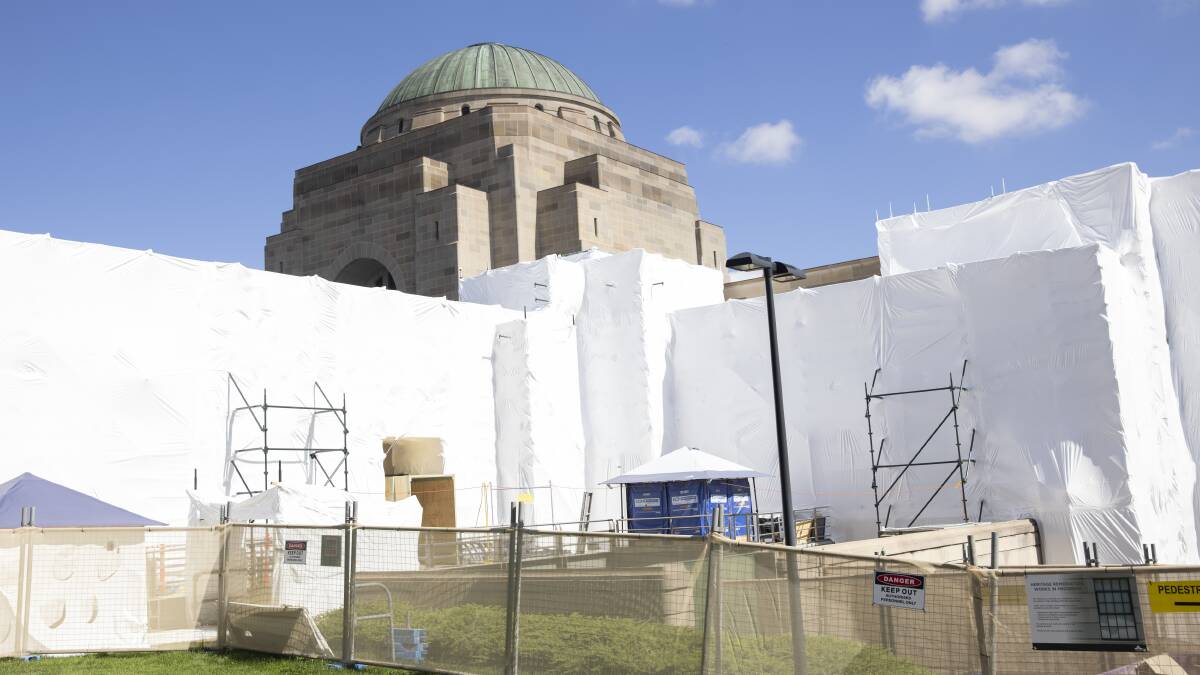
When the Australian War Memorial was first conceived in 1916 the brief was to honour and mark the sacrifices of those who fought in World War I.
Subscribe now for unlimited access.
$0/
(min cost $0)
or signup to continue reading
By 1939 it was obvious a second global conflict was inevitable and that Australia would be involved. The then AWM board widened the brief to include future conflicts.
World War I had not been the war to end all wars after all.
When the AWM opened on Remembrance Day, 1941, Australia was embroiled in another global conflict. The attacks on Darwin and Pearl Harbour were a month away.
Australia's involvement in the UN-sanctioned Korean war led to a further extension of scope and by the early 1960s there were galleries dedicated to all aspects of Australian involvement in World War I, World War II and the Korean war.
And, to nobody's surprise, Australian forces were being sent to fight overseas in yet another war; this time in Vietnam.
As an institution with a responsibility to record and interpret history as well as to commemorate the fallen, the AWM is a living organism which will continue to evolve over time. The building and the collection of relics and artefacts must always take second place to those who are remembered and to those who come to remember them.
The current controversial $550 million expansion is intended to explore Australia's participation in more recent conflicts and peacekeeping missions which, despite not being the mass casualty events of the 20th century, have also scarred individuals, families and the national psyche.
The Second Gulf War in 2003 was one of the most controversial in our history. It was justified on the false premise Saddam Hussein either had, or was in the process of acquiring, weapons of mass destruction.
This led to some of the largest anti-war protests Australia had seen since Vietnam including one in which the words "No War" were painted on the Sydney Opera House.
The inclusion of protest memorabilia follows a precedent set by the inclusion of the story of anti-war and anti-conscription demonstrators in the World War I narrative.
All of these events, as well as the involvement of the ADF in Timor, the Solomons, Somalia, Iraq and Afghanistan, will be detailed in the new galleries. This is as it should be. The AWM has a clear obligation to look beyond actual conflicts and missions to how they changed the nation and how people reacted to them.
It would be impossible, for example, to tell the story of Vietnam without speaking of the massive moratorium marches of the 1960s.
The decision to place a much greater emphasis on the civilian experience of war, especially in countries such as Iraq and Afghanistan which were devastated by conflict, recognises that this too is an important part of the conversation.
That is also the case with planned recognition of the consequences of PTSD on returned ADF members and their families.
This type of inclusion, which has been extended to planning for a "Frontiers War" gallery due to open before the end of the decade, is not an exercise in historical revisionism.
It is a legitimate and necessary attempt to present as much of the truth as space and time allows. If the AWM did not make this effort it would be little better than a jingoistic nationalist shrine to Anzackery.
That was never Bean's or Treloar's intention when they combed the battlefields of Europe for relics and artefacts. They wanted people to understand the tragedy of war and to remember the fallen; not to glorify it.
While, as Plato observed more than 2000 years ago, "only the dead see the end of war", the best way to prevent it is to highlight its dreadful cost and consequences.
Send a letter to the editor
- Letters to the editor should be kept to 250 or fewer words. To the Point letters should not exceed 50 words. Reference to The Canberra Times reports should include a date and page number. Provide a phone number and address (only your suburb will be published). Responsibility for election comment is taken by John-Paul Moloney of 121 Marcus Clarke Street, Canberra. Published by Federal Capital Press of Australia Pty Ltd.

